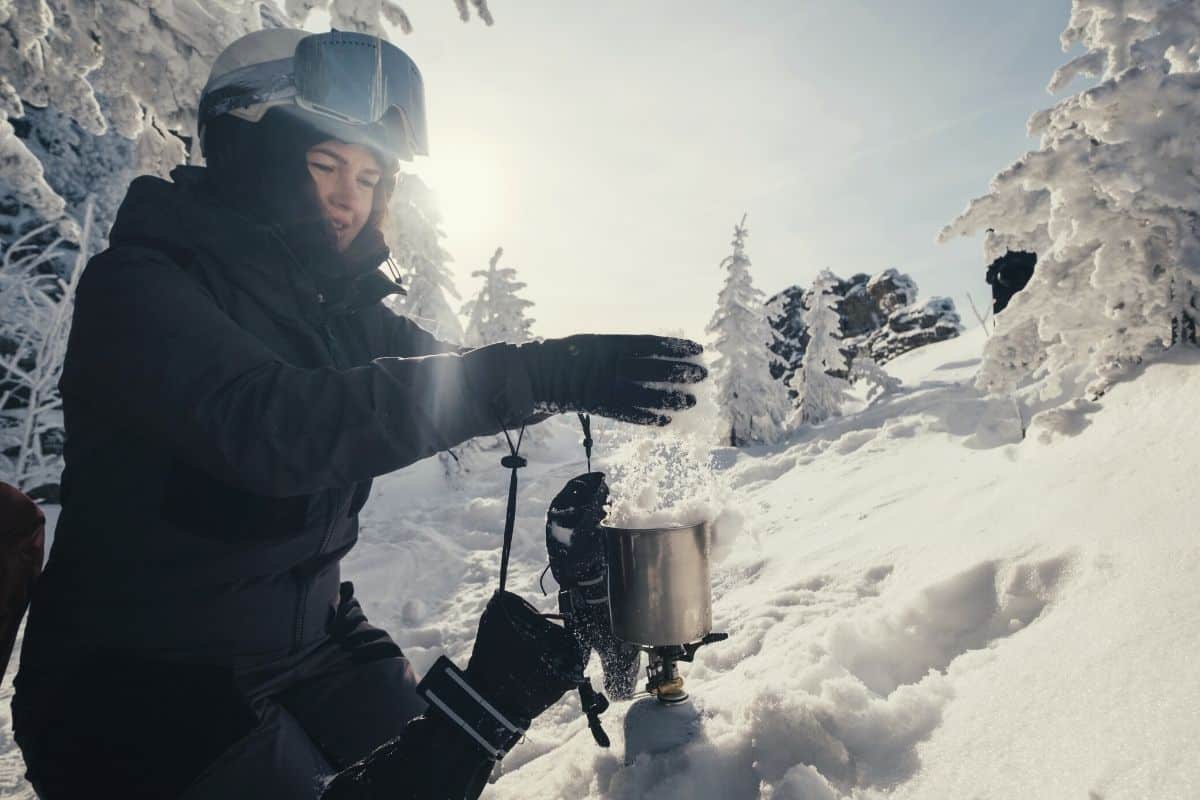Staying hydrated while winter camping is essential. But finding running water in the winter is no easy feat. In the absence of running water, the obvious choice is melting snow.
Snowflake conversion is a great way to get drinking water – if, that is, you follow a few safety precautions.
In this article, we’ll discuss what you need to do to turn frozen H2O into the drinkable kind in cold environments. That way, you can make the most of your wintertime adventures.
Table of Contents
Is It Safe to Eat Snow or Ice?
Yes, it is generally safe to eat snowflakes or ice – with some caveats.
As a kid, you were probably told to avoid eating any fluffy stuff that was yellow, red, brown, or any other color besides white. That advice still holds true in adulthood.
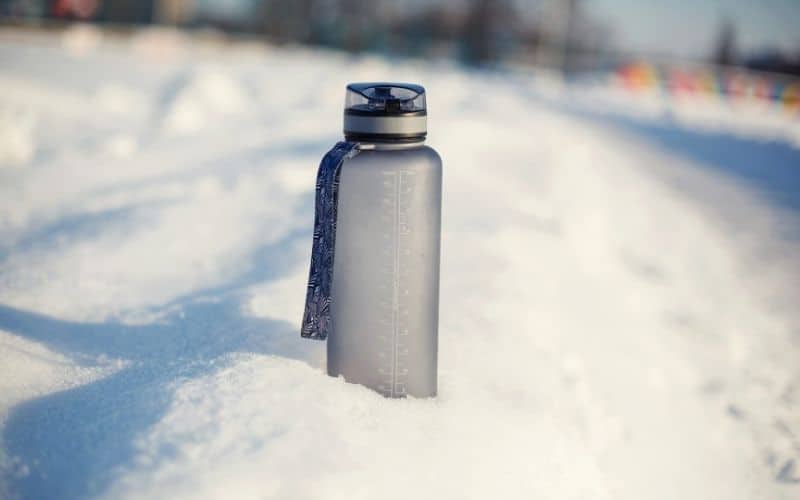
Snowflakes and ice are just frozen versions of water. On their own, there’s nothing dangerous about eating snow or ice. But they can be contaminated with various substances like road salt, bacteria and algae that can make them toxic to consume.
It’s also worth mentioning that while you can eat them, consuming these frozen substances isn’t a good method for staying hydrated.
Your body has to burn a lot of energy to warm up snowflakes and ice to the point where it’s in a usable liquid state. This can actually dehydrate you in the long run. In emergency situations, consuming a small amount of snowflakes isn’t horrible, but it’s best to melt it first to get liquid water.
Is It Safe to Drink Melted Ice or Snow?
Most hikers believe it is safe to drink melted snow and ice as long as you avoid melting the yellow, red, brown, or gray varieties.
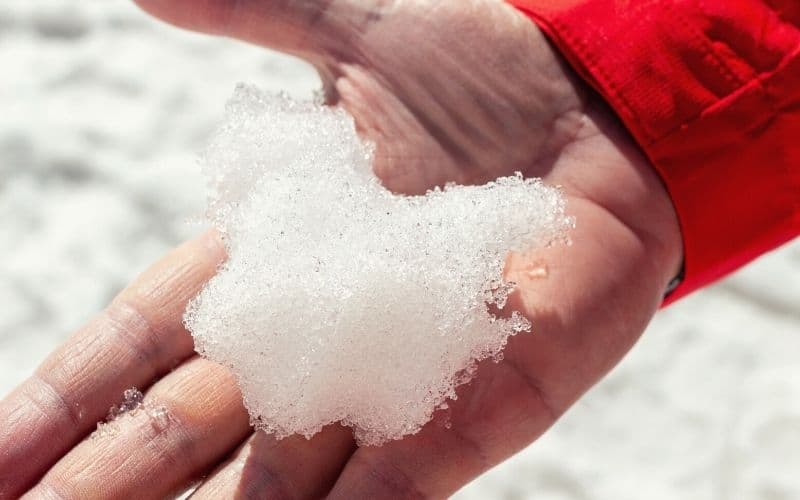
Scientifically speaking, however, snowflakes need “nucleation sites” to form in the atmosphere. These “sites’ can be bits of dirt, bacteria, dust, pollen, or even smoke particulates. This means that even virgin-white snowflakes aren’t “clean snow”, per se. It also means that boiling or using a purification treatment is the only way to ensure you get truly safe drinking water.
For the majority of folks drinking snow that has melted it is unlikely to have any adverse effects, but if you have a delicate stomach we’d highly recommend you follow method 1, and boil the water to kill off any nasties.
What You’ll Need to Follow This Tutorial
The supplies you need will depend which method you choose:
Method 1: Stove
- Small amount of water
- A camping stove, pot, and fuel
- A flask
Method 2: Body Heat
- A water bottle
Method 3: Drip Method
- A fire
- An unused, preferably clean shirt
How to Convert Ice or Snow into Drinking Water: 3 Methods
Once you have all the supplies you need, it’s time to convert the fluffy white stuff into drinking water. Here are three methods to try during your next cold-weather camping trip.
Method 1: Stove
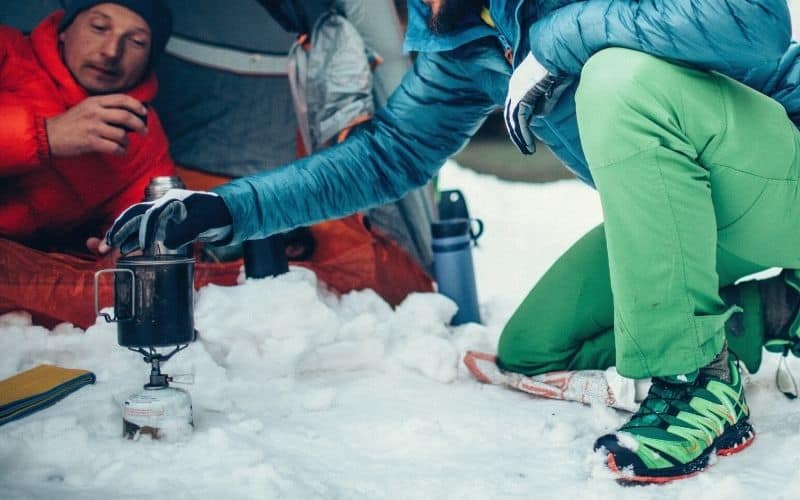
The easiest method for creating drinkable water from the fluffy white stuff is the stove method. To use this method, do the following:
- Find some clean snowflakes or ice. As mentioned above, the yellow variety is not recommended. If it isn’t human pee that’s turning the white stuff yellow, it’s either animal pee or tree sap, both of which are acquired tastes.
- Place a little bit of water into a pot or heat-proof pan over a propane gas, liquid fuel, or canister stove.
- Add fresh snow gradually to the pot on your camping stove. Don’t dump it all in at once.
- Bring to a boil and leave to simmer for at least 3 to 5 minutes.
- Leave your boiling water to cool before adding to your water bottle or enjoy a hot brew.
Method 2: Body Heat
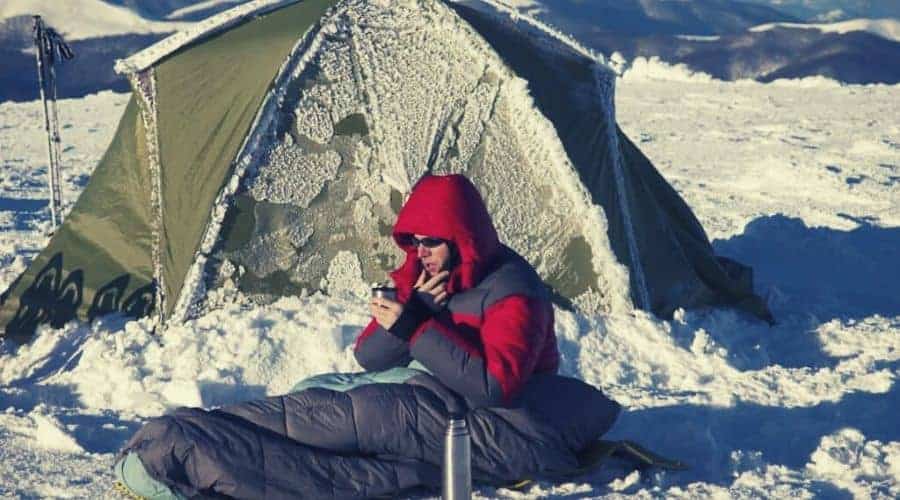
If you don’t have a stove or any other fuel you can use to make a fire, this method is your next best bet. To use this method, do the following:
- Take your water bottle and add a small quantity of fresh fluffy stuff to it.
- Place your full water bottle in your jacket for about half an hour (or take it into your sleeping bag at night).
- Add more into the container every half hour or so until it melts.
- Enjoy!
Method 3: Drip Method
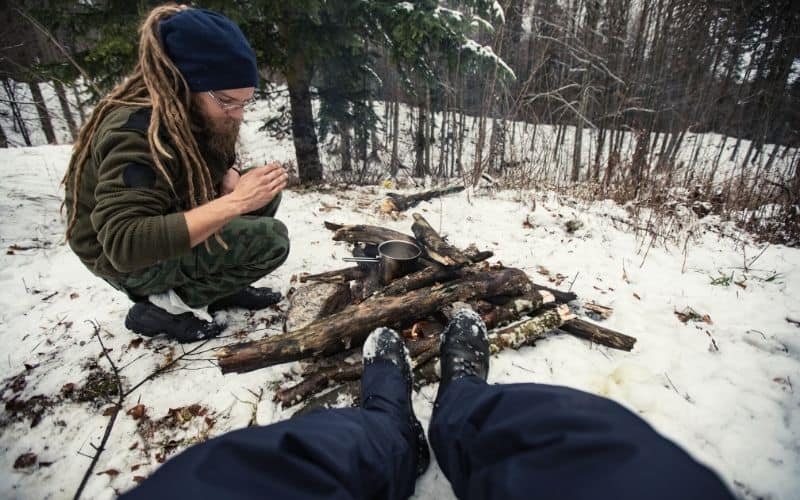
The drip method is ideal if you already have a campfire going and can help remove any dirt/grit. To use this method:
- Start your campfire but don’t let it get too big.
- Suspend a few handfuls of snow well above the fire in a clean shirt.
- Place a cup, pan, or other container below the shirt to catch the water as it drips down.
- Wait until the water fills up the container.
- For hot water or hot drinks, get the water boiling before consuming.
So, Can You Melt Snow and Drink It?
Yes, you can melt snow and drink it if you’re out camping during the colder months of the year. By using any of the above methods, you’ll be able to get your fill of H20 no matter where your winter wanders take you.
How did you like our article? Which of these methods will you try out during your next adventure? Let us know in the comments below! And feel free to share this post with your friends!
